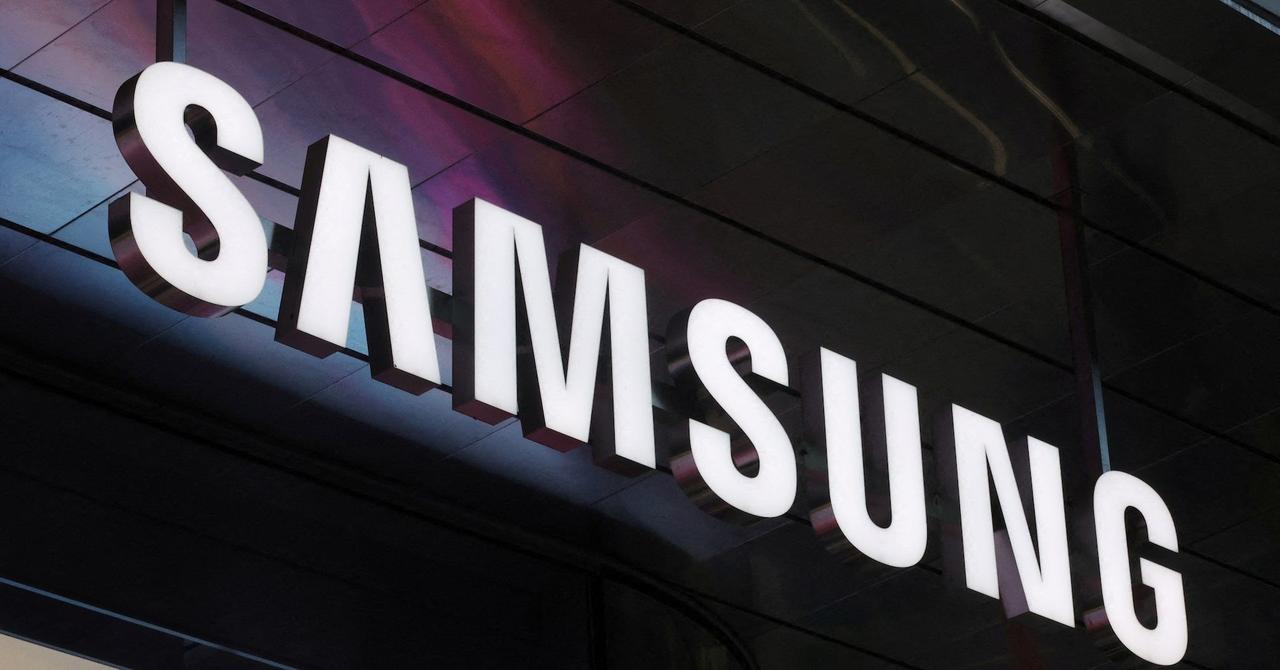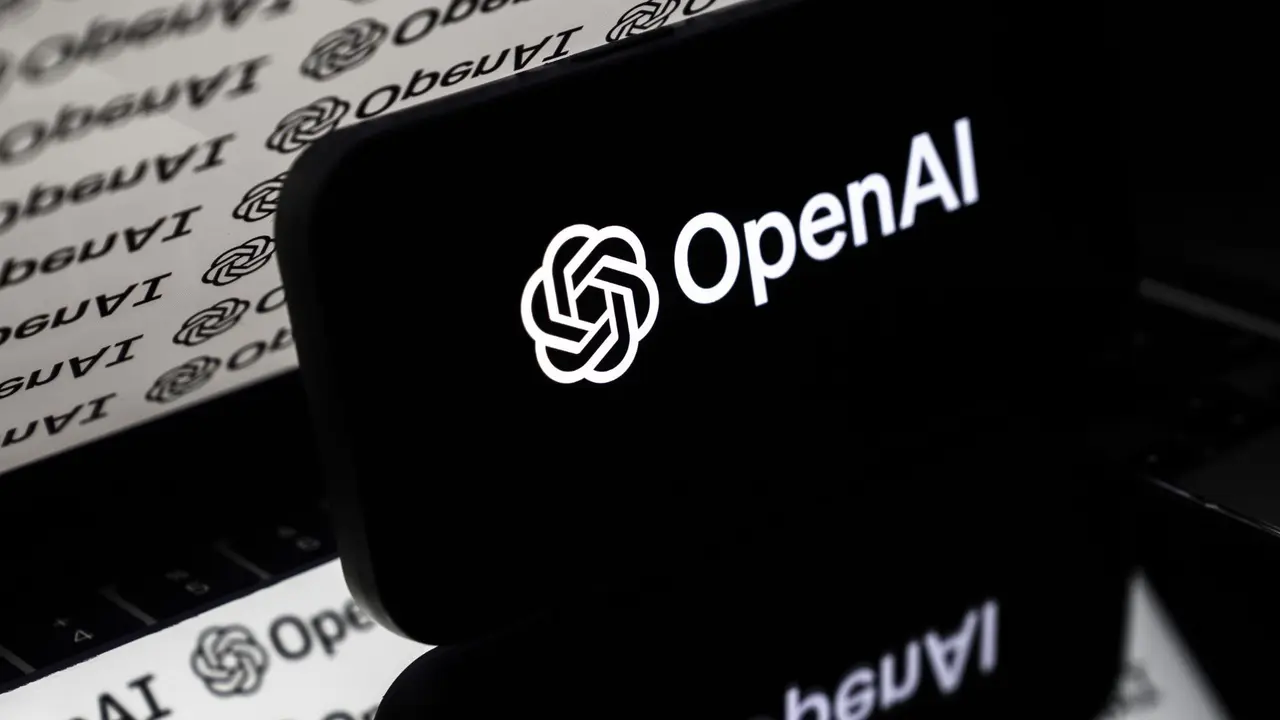Samsung Electronics Reports Strong 2024 Performance, Focuses on AI and Advanced Technologies for Future Growth
2 Sources
2 Sources
[1]
Samsung Electronics Announces Fourth Quarter and FY 2024 Results
Quarterly revenue of KRW 75.8 trillion, operating profit at KRW 6.5 trillion Company to focus on leveraging diverse business portfolio in combination with technological progress to drive a new phase of growth Samsung Electronics today reported financial results for the fourth quarter and the fiscal year 2024. The Company posted KRW 75.8 trillion in consolidated revenue and KRW 6.5 trillion in operating profit in the quarter ended December 31, 2024. For the full year, it reported KRW 300.9 trillion in annual revenue and KRW 32.7 trillion in operating profit. Although fourth quarter revenue and operating profit decreased on a quarter-on-quarter (QoQ) basis, annual revenue reached the second-highest on record, surpassed only in 2022. Meanwhile, operating profit was down KRW 2.7 trillion QoQ, due to soft market conditions especially for IT products, and an increase in expenditures including R&D. In the first quarter of 2025, while overall earnings improvement may be limited due to weakness in the semiconductors business, the Company aims to pursue growth through increased sales of smartphones with differentiated AI experiences, as well as premium products in the Device eXperience (DX) Division. For 2025 as a whole, the Company plans to enhance technological and product advantages in AI, continue to meet future demand for high-value-added products and drive sales growth in premium segments. With market conditions expected to remain soft in 1H for the Device Solutions (DS) Division, the Company will focus on securing technology leadership for mid- to long-term growth. Samsung Display Corporation (SDC) will look to strengthen its leading position in high-end products by enhancing product competitiveness, and the DX Division will focus on extending its leadership in delivering AI experiences across a diverse product portfolio. The Company's capital expenditures in 2024 reached a total of KRW 53.6 trillion, including KRW 46.3 trillion spent in the DS Division and KRW 4.8 trillion in SDC. In the fourth quarter, the total was KRW 17.8 trillion, with KRW 16 trillion allocated to the DS Division and KRW 1 trillion to SDC. The DS Division posted KRW 30.1 trillion in consolidated revenue and KRW 2.9 trillion in operating profit in the fourth quarter of 2024. The Memory Business achieved record-high fourth-quarter revenue, backed by a higher blended DRAM average selling price (ASP) due to the increased sales of high-bandwidth memory (HBM) and high-density DDR5 for servers. However, operating profit decreased slightly compared to the previous quarter as a result of increased R&D expenses to secure future technology leadership, as well as the initial ramp-up costs to secure production capacity for cutting-edge nodes. In the first quarter of 2025, amid ongoing uncertainties in demand, the Memory Business will shift its business portfolio to more high-value-added products by accelerating the migration to cutting-edge nodes to respond to the demand for high-performance and high-density products. For DRAM, the Memory Business seeks to increase the share of DDR5 and LPPDR5x shipments by accelerating the transition to the 1b nanometer (nm) process. As for NAND, the Business is executing the technology migration from V6 to V8 while increasing sales of V7 QLC-based server SSDs. In 2025, overall memory market demand is expected to recover from the second quarter. The Memory Business is reducing the portion of legacy DRAM and NAND products to align with market demand and accelerating the migration to cutting-edge nodes. The Business will continue to strengthen its business competitiveness and optimize its portfolio by increasing the portion of high value-added products such as HBM, DDR5, LPDDR5x, GDDR7 and server SSDs based on advanced process nodes. Earnings at the System LSI Business declined in the quarter due to weak mobile demand and higher R&D expenses to advance cutting-edge product development. In the first quarter of 2025, earnings are expected to remain weak due to delayed entry into the flagship system-on-a-chip (SoC) market. However, demand for core products such as image sensors and DDI is expected to increase on the back of flagship smartphone launches. In 2025, the System LSI Business will focus on further enhancing its flagship SoC through product optimization. For image sensors, the Business will proactively respond to high-resolution needs -- such as for 200-megapixel (MP) telephoto and main cameras. The overall profit for the Foundry Business decreased due to lower utilization rates and higher R&D expenses for advanced-node technology. Its 2nm GAA technology is under active development, with the design-kit (DK) already distributed to customers for product design, while the 4nm process is mass producing HPC products based on stable yields. Looking ahead to the first quarter of 2025, earnings are expected to remain weak due to sluggish mobile demand and fixed-cost burden stemming from lower utilization rates. In this environment, the Foundry Business will concentrate on advancing leading-edge process development and enhancing process maturity to expand opportunities in AI and HPC applications and customer engagement for advanced nodes. As for 2025, the Business will continue to secure orders from major customers by ramping up and stabilizing the 2nm GAA technology, while simultaneously bolstering the 4nm technology and design infrastructure to meet the growing mobile and HPC needs. SDC posted KRW 8.1 trillion in consolidated revenue and KRW 0.9 trillion in operating profit for the fourth quarter. SDC reported declining profits QoQ due to sluggish smartphone demand and rising competition for the mobile display business, and achieved double-digit revenue growth QoQ for the large display business, with an increase in year-end TV sales. In the first quarter of 2025, the earnings outlook for the mobile display business is conservative, as the overall smartphone market demand is expected to remain weak. For the large display business, TVs with enhanced image quality are scheduled to launch, as well as high-resolution monitors. In 2025, SDC aims to sustain its leadership in the high-end segment by strengthening product competitiveness. For the large display business, SDC will increase sales of diversified high-performance TVs and monitors. The Mobile eXperience (MX) and Networks businesses posted KRW 25.8 trillion in consolidated revenue and KRW 2.1 trillion in operating profit for the fourth quarter. The MX Business reported a QoQ decrease in sales and profit, in part due to the fading effects of new flagship model launches. However, on a full-year basis, flagship sales saw robust growth on the back of double-digit growth of the Galaxy S24 series featuring Galaxy AI, with tablets and wearables also increasing in both value and shipments. In the first quarter of 2025, the MX Business plans to drive sales growth based on its flagship models, particularly the newly launched Galaxy S25 series, and will continue to lead the AI smartphone market through promotion of new AI experiences and product competitiveness. In 2025, the MX Business will reinforce its mobile AI leadership by providing more personalized, differentiated AI experiences while also strengthening the foldable lineup to generate new customer demand. Additionally, the Business plans to expand sales by providing advanced AI features and rich Galaxy ecosystem experiences for premium tablets, notebooks, wearables and the upcoming XR device. While prices of major components are expected to increase this year due to advancements in hardware specifications, the MX Business aims to improve profitability by continuing to build out Galaxy AI and expand sales centered on flagship products. In the fourth quarter, the Networks Business reported significant improvements in revenue and operating profit in key markets. For 2025, performance is set to improve as the Business expects to win new orders and as major operators expand their network and increase adoption of virtualized and open radio access networks (vRAN/ORAN). The Visual Display (VD) and Digital Appliances (DA) Businesses posted KRW 14.4 trillion in consolidated revenue and KRW 0.2 trillion in operating profit in the fourth quarter. The VD Business saw revenue increase in the fourth quarter due to expanded sales and an improved sales mix through peak-season promotion, yet profitability decreased slightly as a result of increased cost from intensified competition amid largely stagnant TV demand. In the first quarter of 2025, while overall TV demand is expected to decrease YoY due to growing domestic and global economic uncertainties, demand for high-value-added products is projected to remain solid. The Business will try to improve profitability and expand strategic product sales through new model launches based on the Vision AI strategy for Samsung's AI screens. In 2025, the overall TV market is expected to grow slightly in major emerging markets. The VD Business plans to lead the AI screen market under Samsung's "Home AI" vision, integrating AI into all connected device experiences based on the SmartThings platform and expand the adoption of Samsung Knox security solutions.
[2]
Samsung Q4 2024: Profits up YoY, but chip challenges persist
Samsung has reported its earnings for Q4 2024 that ended December 31, 2024 in which the company posted 75.8 trillion won (USD 52.09 billion approx.) consolidated revenue, up 11.79% YoY, but down 4.17% QoQ. It made an operating profit of 6.5 trillion won (USD 4.46 billion), up 132.14% YoY, but down 29.34% QoQ, largely due to soft market conditions especially for IT products, and an increase in expenditures including R&D. For the whole of 2024, it posted 300.9 trillion won ($206.82 billion approx.) consolidated revenue, up 16.22% YoY and the second-highest on record, surpassed only in 2022. Operating profile was 32.7 trillion won (USD 22.47 billion), up 395.45% YoY. The MX and Networks businesses posted 25.8 trillion won in consolidated revenue, up 3.2% YoY, but down 15.4% QoQ. The division posted 6.5 trillion won in operating profit, up 132.14% YoY, but down 29.34% QoQ. The QoQ decrease in sales and profit, in part due to the fading effects of new flagship model launches. However, on a full-year basis, flagship sales saw robust growth on the back of double-digit growth of the Galaxy S24 series with tablets and wearables also increasing in both value and shipments, said Samsung. In the first quarter of 2025, the MX Business plans to drive sales growth based on its flagship models, particularly the newly launched Galaxy S25 series, and will continue to lead the AI smartphone market through promotion of new AI experiences and product competitiveness. In 2025, the MX Business will reinforce its mobile AI leadership by providing more personalized, differentiated AI experiences while also strengthening the foldable lineup to generate new customer demand. Additionally, the Business plans to expand sales by providing advanced AI features and rich Galaxy ecosystem experiences for premium tablets, notebooks, wearables and the upcoming XR device. It also plans to improve profitability by efforts such as expanding flagship sales. The semiconductor unit reported operating profit of 30.1 trillion won, up 38.7% from the previous year, and up 2.73% from the previous quarter. The Memory Business achieved record-high fourth-quarter revenue, backed by a higher blended DRAM average selling price (ASP) due to the increased sales of high-bandwidth memory (HBM) and high-density DDR5 for servers. However, operating profit decreased slightly compared to the previous quarter as a result of increased R&D expenses to secure future technology leadership, as well as the initial ramp-up costs to secure production capacity for cutting-edge nodes. The overall profit for the Foundry Business decreased due to lower utilization rates and higher R&D expenses for advanced-node technology. Its 2nm GAA technology is under active development, with the design-kit (DK) already distributed to customers for product design, while the 4nm process is mass-producing HPC products based on stable yields. Looking ahead to the first quarter of 2025, earnings are expected to remain weak due to sluggish mobile demand and fixed-cost burden stemming from lower utilization rates. In this environment, the Foundry Business will concentrate on advancing leading-edge process development and enhancing process maturity to expand opportunities in AI and HPC applications and customer engagement for advanced nodes. As for 2025, the Business will continue to secure orders from major customers by ramping up and stabilizing the 2nm GAA technology, while simultaneously bolstering the 4nm technology and design infrastructure to meet the growing mobile and HPC needs.
Share
Share
Copy Link
Samsung Electronics announces its Q4 and FY 2024 financial results, highlighting record-breaking annual revenue and a strategic shift towards AI and advanced technologies to drive future growth and maintain market leadership.

Samsung's Financial Performance in 2024
Samsung Electronics has reported strong financial results for the fourth quarter and fiscal year 2024, showcasing the company's resilience and strategic focus on advanced technologies. For Q4 2024, Samsung posted consolidated revenue of KRW 75.8 trillion (approximately USD 52.09 billion) and an operating profit of KRW 6.5 trillion (USD 4.46 billion)
1
2
.The full-year performance was particularly impressive, with annual revenue reaching KRW 300.9 trillion (USD 206.82 billion), marking a 16.22% year-over-year increase and the second-highest on record, surpassed only in 2022
2
. The operating profit for 2024 stood at KRW 32.7 trillion (USD 22.47 billion), representing a substantial 395.45% year-over-year growth2
.Semiconductor Business Performance
Samsung's Device Solutions (DS) Division, which includes the semiconductor business, faced challenges in Q4 2024. The Memory Business achieved record-high fourth-quarter revenue, driven by increased sales of high-bandwidth memory (HBM) and high-density DDR5 for servers
1
. However, operating profit decreased slightly due to increased R&D expenses and initial ramp-up costs for cutting-edge nodes1
.The Foundry Business experienced a decline in overall profit due to lower utilization rates and higher R&D expenses for advanced-node technology
1
. Despite these challenges, Samsung is actively developing its 2nm GAA technology and mass-producing HPC products using the 4nm process1
.Mobile and Network Business
The Mobile eXperience (MX) and Networks businesses posted KRW 25.8 trillion in consolidated revenue for Q4 2024, showing a 3.2% year-over-year increase but a 15.4% quarter-on-quarter decrease
2
. The division's operating profit was KRW 6.5 trillion, up 132.14% year-over-year but down 29.34% quarter-on-quarter2
.Related Stories
Strategic Focus on AI and Advanced Technologies
Looking ahead to 2025, Samsung is placing a strong emphasis on artificial intelligence (AI) and advanced technologies to drive growth and maintain market leadership. Key strategic initiatives include:
- Enhancing AI capabilities in smartphones, with plans to provide more personalized and differentiated AI experiences
2
. - Strengthening the foldable smartphone lineup to generate new customer demand
2
. - Expanding the application of advanced AI features across the Galaxy ecosystem, including premium tablets, notebooks, wearables, and an upcoming XR device
2
. - Focusing on securing technology leadership in semiconductors for mid- to long-term growth
1
. - Accelerating the migration to cutting-edge nodes in memory production to meet the demand for high-performance and high-density products
1
.
Outlook for 2025
Samsung anticipates that the overall memory market demand will recover from the second quarter of 2025
1
. The company plans to optimize its product portfolio by increasing the proportion of high value-added products such as HBM, DDR5, LPDDR5x, GDDR7, and server SSDs based on advanced process nodes1
.In the foundry business, Samsung will concentrate on advancing leading-edge process development and enhancing process maturity to expand opportunities in AI and HPC applications
1
. The company aims to secure orders from major customers by ramping up and stabilizing the 2nm GAA technology while bolstering the 4nm technology and design infrastructure1
.References
Summarized by
Navi
Related Stories
Recent Highlights
1
AI Chatbots Sway Voters More Effectively Than Traditional Political Ads, New Studies Reveal
Science and Research

2
Google AI glasses set to launch in 2026 with Gemini and Android XR across multiple partners
Technology

3
EU Launches Antitrust Probe Into Google's AI Training Practices and Content Usage
Policy and Regulation







